The Traveler needs your help! They have come to Earth to study an event we call a total solar eclipse. Can you help the Traveler snap photos of an eclipse?
About Eclipses
Total solar eclipses happen when the Moon gets between us and the Sun. During a solar eclipse, the Moon casts its shadow on part of Earth.
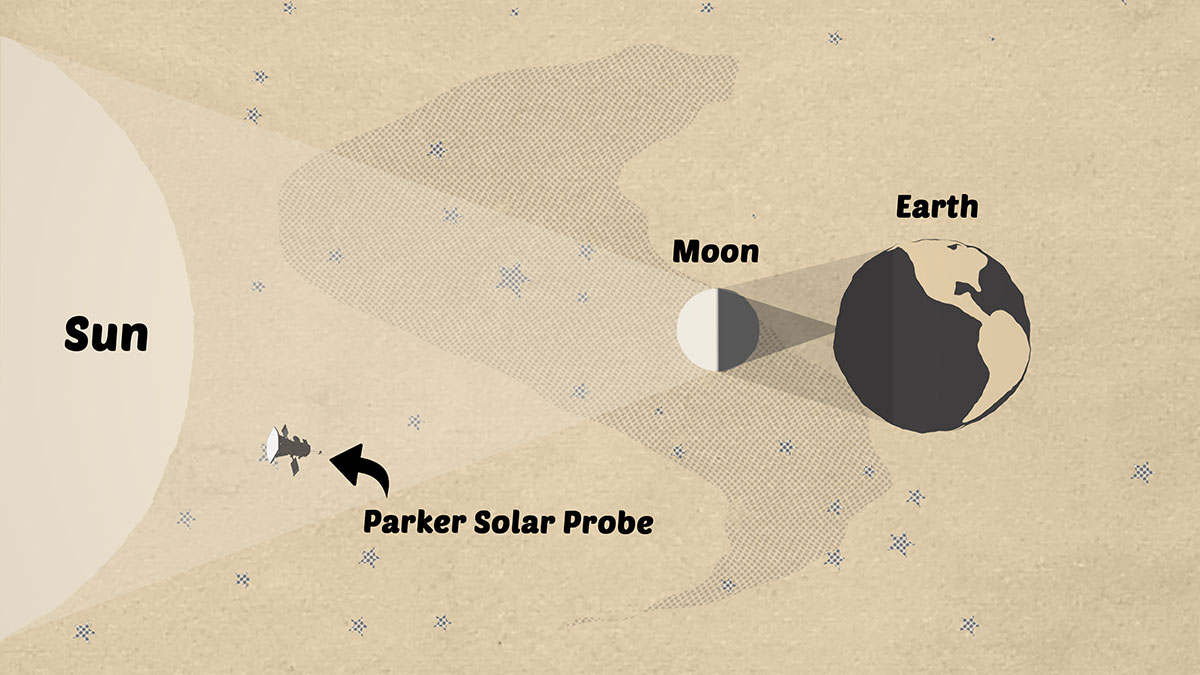
Credit: NASA/Krystofer Kim
If you're in the center of the shadow, you can see the Sun's upper atmosphere appear around the Moon!
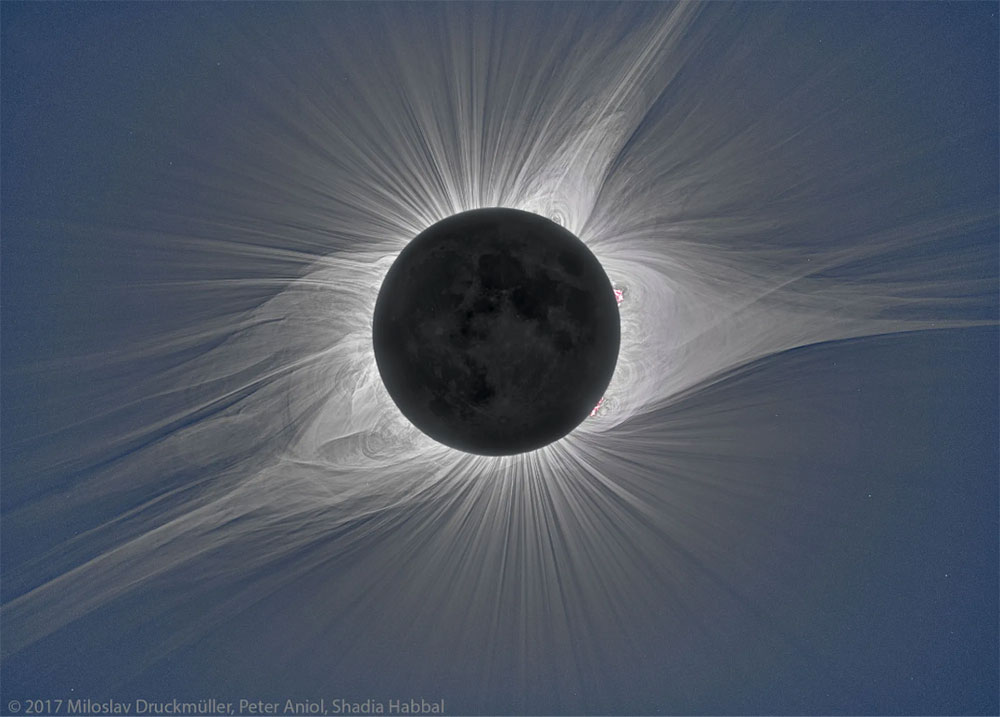
A photograph of the corona taken during the Aug. 21, 2017 total solar eclipse. Credit: Miloslav Druckmüller, Peter Aniol, Shadia Habbal/NASA Goddard, Joy Ng
On April 8, 2024, a total solar eclipse crosses North America. It passes over Mexico, the United States, and Canada. Anyone along the eclipse’s shadow path can see the total eclipse if the skies are clear. During the total eclipse, the sky will darken. It will look as if it were dawn or dusk. This total solar eclipse will be the last one that many people in the United States will be able to see for many years.
If you want to look at a solar eclipse, make sure you have solar viewing or “eclipse” glasses! These glasses are much darker than normal sunglasses. They block most of the Sun’s light. Looking directly at the Sun without eclipse glasses can damage your eyes. Remember to also use special filters over the lenses of cameras, telescopes, or binoculars when looking at the Sun. The only time during a solar eclipse when it’s safe to look at the Sun without eclipse glasses is during the brief total phase of a total solar eclipse, when the Moon completely blocks the Sun’s bright face. Ask an adult for help looking at the Sun.
Total solar eclipses happen somewhere around the world about once a year. But because the Moon casts a fairly small shadow, these eclipses can only be seen from a small area on Earth each time.
Other things can also pass between us and the Sun and block some of its light. When this happens, it is called a transit. Different things like planets, comets, spacecraft, and even birds can transit the Sun.
How to Play
The goal of this game is to snap photos of eclipses and objects that transit the Sun. Here’s how to play on your desktop:
- Use your cursor to center on objects passing in front of the Sun.
- Press the spacebar to take a picture.
- To take a close-up picture you can zoom in and out using your laptop trackpad or scroll wheel on your mouse, or by pressing the W and S buttons on your keyboard.
- To change the camera filter and get a different view of the Sun, press the A and D keys.
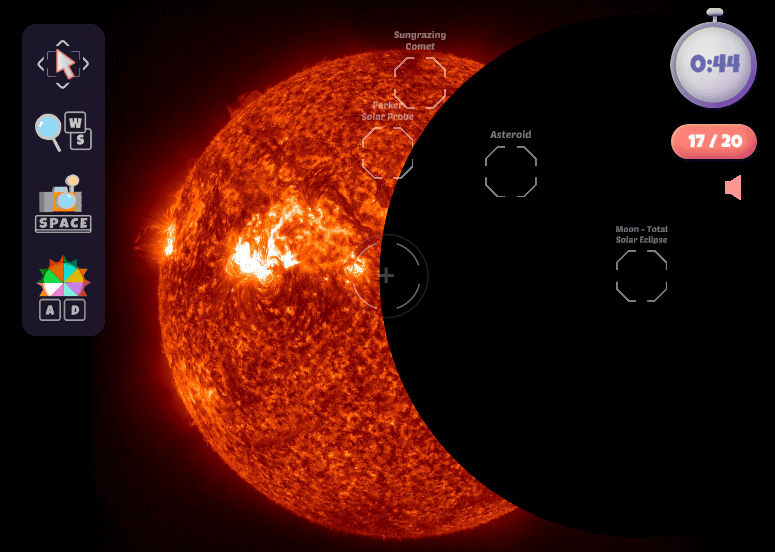
Credit: NASA
Since the Sun is very bright, transiting objects look like dark shapes. During the game, you might notice some objects are bigger than others. That’s because the objects are different sizes and different distances from you. Objects that are far away, like Mercury, look smaller — even though Mercury is an entire planet that’s even larger than the Moon. Objects that are closer to Earth – or even in Earth’s atmosphere, like a plane – look bigger. Here are some examples from the real world:
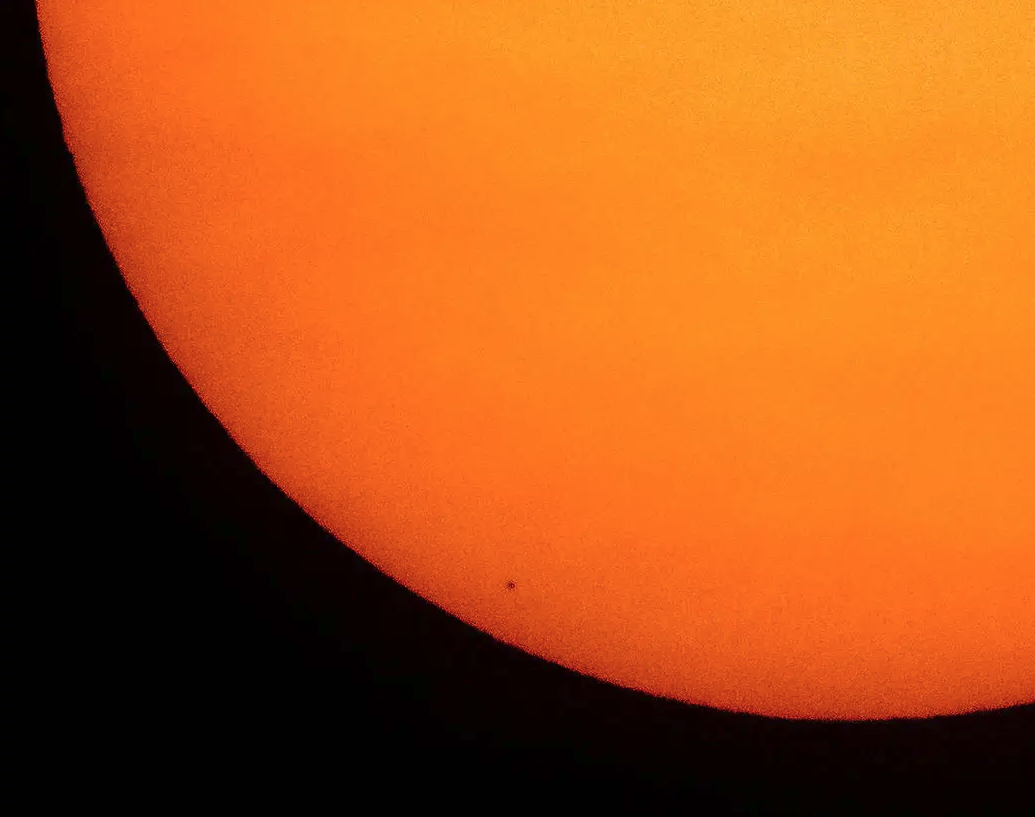
Mercury can be seen crossing the face of the Sun at the bottom of this picture. Credit: NASA/Bill Ingalls
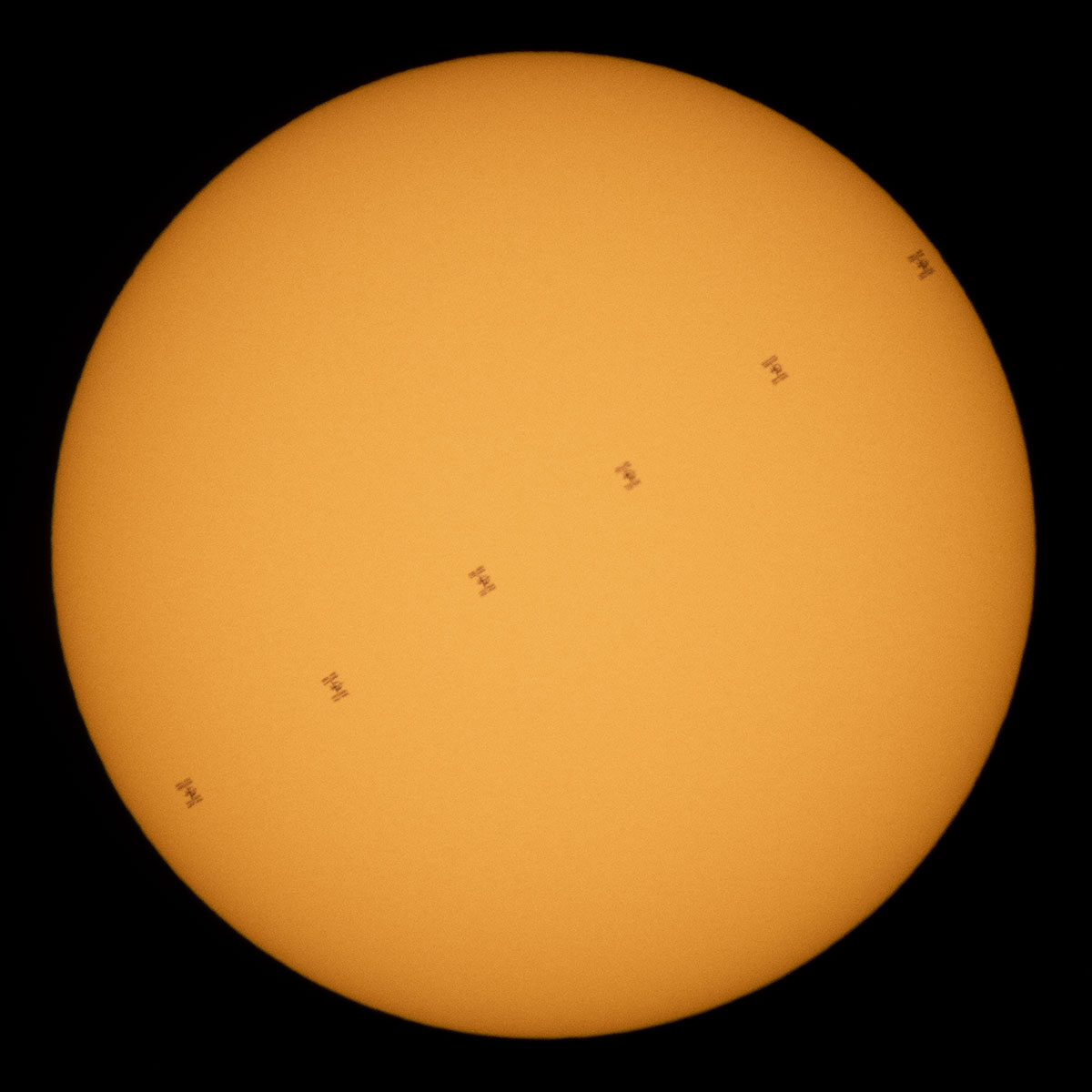
The International Space Station crosses in front of the Sun. Credit: NASA/Joel Kowsky
After the time is up, you’ll be able to review your photos. You’ll also find information about the objects you captured. Select your favorite snaps to make postcards. You can decorate and save them to share with your friends and family. Play again to discover rare objects and take more photos!
Links to Other Resources
Total Solar Eclipse Safety
Learn more about the April 8, 2024, total solar eclipse
Learn more about solar eclipses
Learn more about the Sun
Credits
AJ Christensen, developer
Dwight Doyle, music composer
Mara Johnson-Groh, writer
Krystofer Kim, designer
Brenda Lopez Silva, animator
Joy Ng, producer
Kristen Perrin, graphics support
Scott Wiessinger, music support
Special Thanks to:
Kyle Mansfield
Jessica Stoller-Conrad
Barb Mattson
Mike Tissenbaum
And our many playtesters


